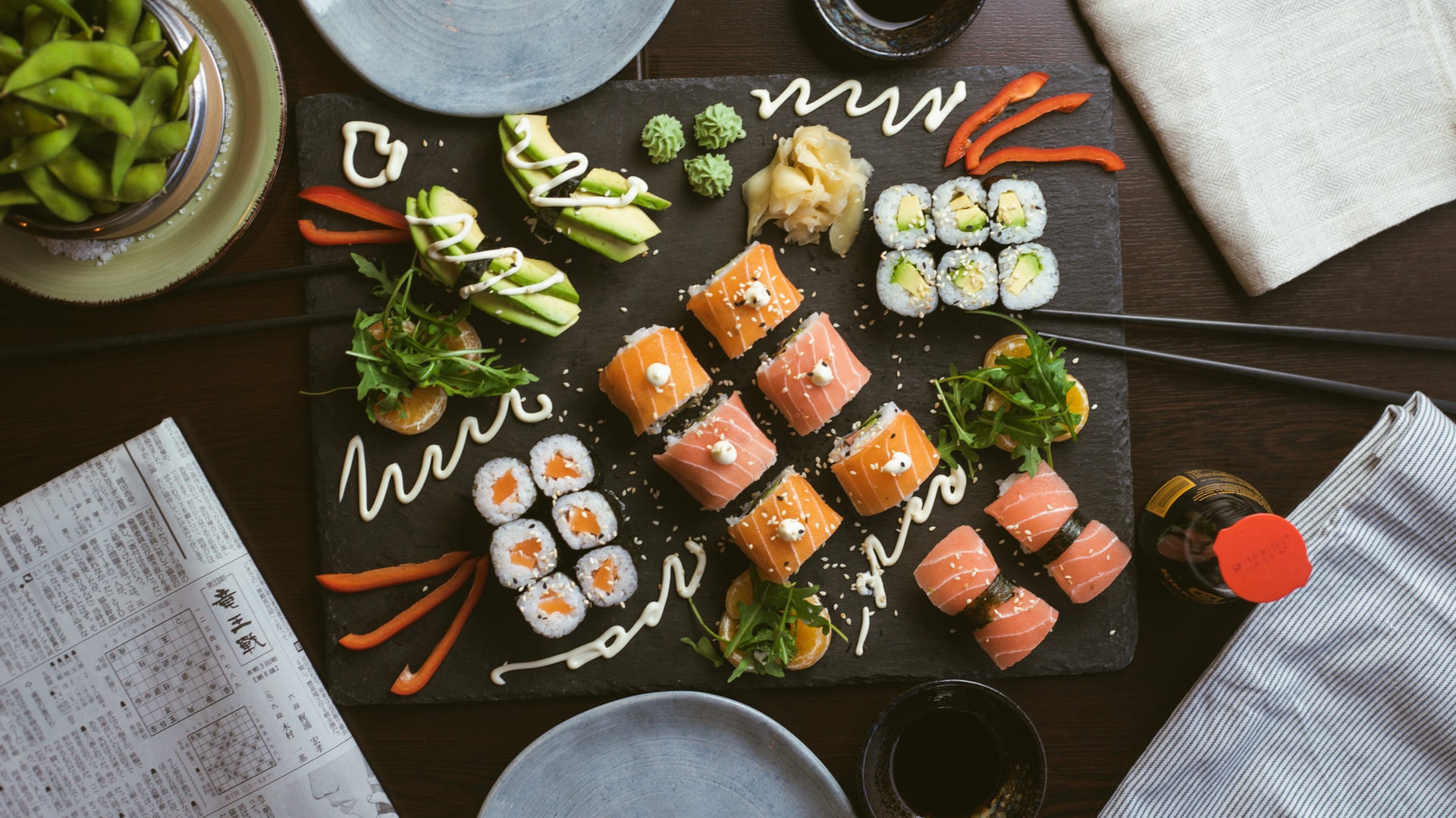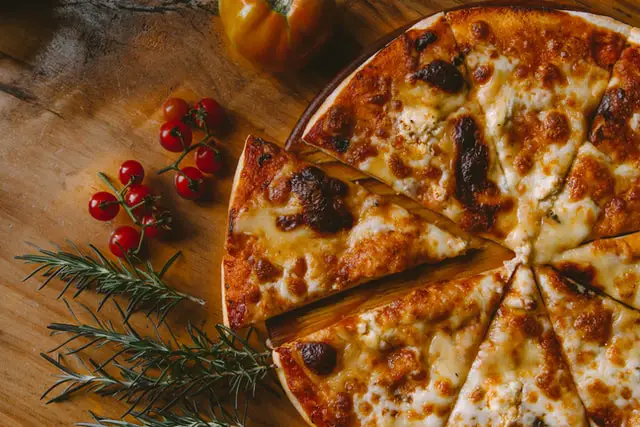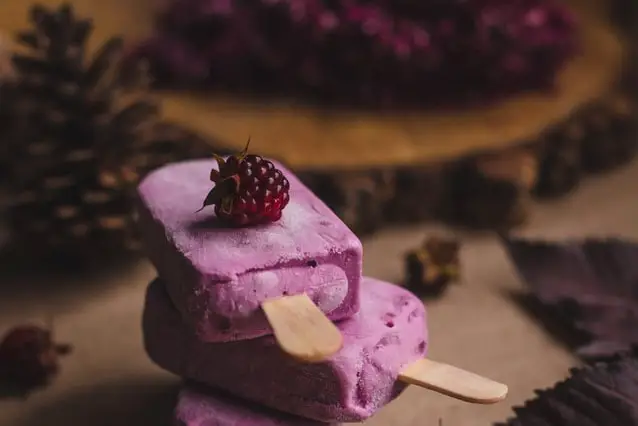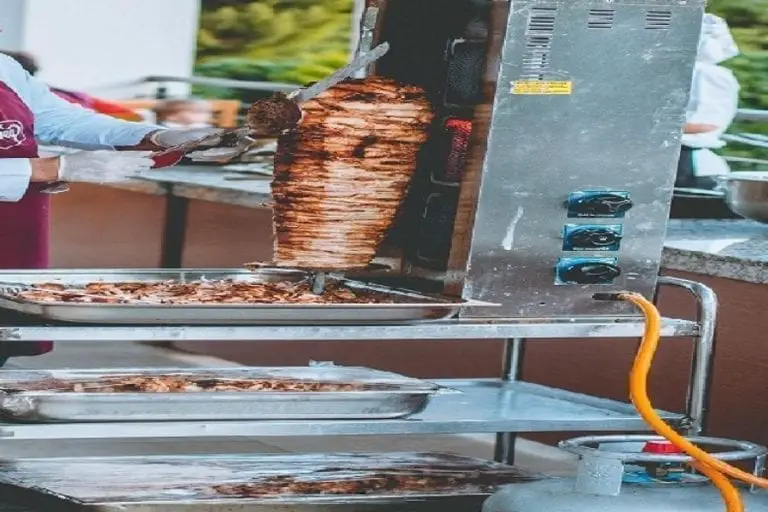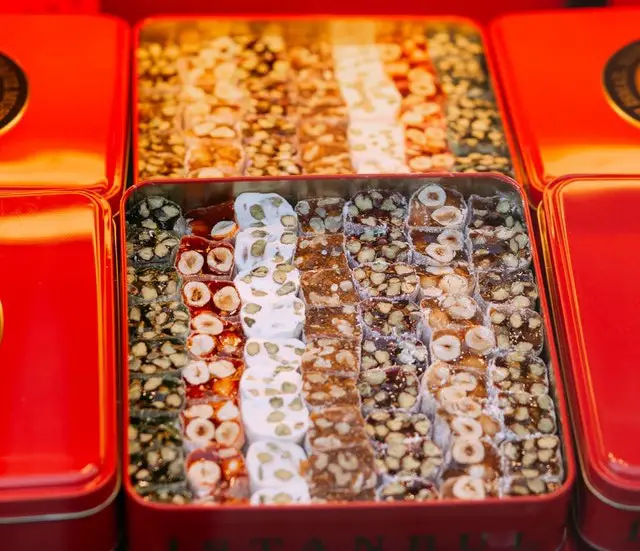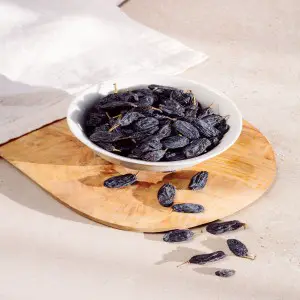Is chicken sushi safe in the course of pregnancy?
Eating chicken sushi is safe during pregnancy if you stick to a few simple rules. It is certainly safer than fish-based sushi and whether you are pregnant or not, eating raw, or undercooked seafood, can cause many problems. Important precautions for eating chicken sushi during pregnancy are only four:
- Avoid certain components such as fresh asparagus among others.
- Proper preparation of different ingredients of your sushi serving.
- Ensure the cleanliness of the food handler or prepare it at home (two suggested recipes are included)
- Consume reasonable amounts per week (see the details below)
What is sushi?
According to the dictionary, sushi as a word means sour rice, which is the natural result of adding vinegar to rice. The traditional meaning of sushi as a popular Japanese dish, includes the rice, the filling, and the toppings. Raw fish or sashimi is the most common sushi ingredient.
Sushi, as a food, was invented more than a thousand years ago, and its original purpose was to be a lengthy way to preserve fish that needed several months to be ready to serve. However, by the eighteenth century, it became a common Japanese dish and this lengthy preservation process was abandoned.
Today, there are at least a hundred types of sushi in Japan alone, and they can be grouped under only five or six categories. The commonest ingredients are fish and other seafood, rice, vegetables, meat, and poultry. Many sides exist such as wasabi, teriyaki, and may.
Chicken sushi is a type of sushi that is commonly unheard of. Although there are several ways of preparing cooked chicken sushi, in Japan, raw chicken sushi is still served. Some of its subtypes are Sweet Chilli Chicken sushi, Buffalo Chicken Sushi, Chicken Sushi Burritos, and teriyaki chicken sushi.
Why are pregnant women more susceptible?
Why is it necessary to refer to pregnant women as a distinct entity when we talk about food or other things? The simple answer is: A woman who is pregnant isn’t just carrying a baby inside, but she is also much more susceptible to a variety of aspects than a non-pregnant woman.
Numerous changes to the circulation, immune system blood components, and, especially her digestive system are involved in causing this vulnerability.
- She is more likely to suffer from indigestion when eating normal food in normal amounts and could suffer more serious issues should she develops infections.
- She may also transfer some of the harmless acquired infections to her infant, resulting in potentially harmful consequences for the infant, and may not tolerate certain medications for her treatment during certain stages of her pregnancy.
- Not only is the mother at risk, but the expected baby is. The 12 weeks that precede the birth are the most crucial. During this time, even the safest medication should be avoided unless strongly advised by a trusted physician.
- Additionally, your infant is particularly susceptible to exposure to mercury which can lead to neurologic issues since mercury can cause harmful impacts on our nervous system throughout the growth process.
- The majority of your baby’s organs will be developing and functioning towards the final stage in the 1st trimester. It’s in the first 12 weeks when the fetus is at its most vulnerable time to damage and harm due to exposure to harmful substances.
What are the risks of eating sushi during pregnancy?
- If the sushi and sashimi you purchase are made from fish that isn’t frozen, it could contain tiny parasitic worms known as Anisakis worms. They are killed by the freezing process.
- Listeria is a form of bacteria that may contaminate food items and lead to listeriosis. Listeriosis is an extremely serious illness that can be transmitted to the unborn child. This can lead to stillbirth or miscarriage. Foods that may be contaminated by listeria include those that haven’t been thoroughly cooked before consumption and those that have a long shelf-life when stored under refrigeration.
- It’s also suggested that pregnant women should avoid sushi that contains other fillings that haven’t been prepared fresh. It is possible to contract the parasite toxoplasma if you consume meat that is raw, pink, or bloody within the middle. This can cause toxoplasmosisand cause an illness similar to flu that can develop within a few weeks after becoming infected. Toxoplasmosis is a relatively benign illness for you however it can cause harm to your child and cause serious health issues. In some instances, it may result in miscarriage or even the disappearance of a child when it is born.
- Raw fish could also be contaminated with harmful bacteria, such as vibrio, salmonella, and Clostridium.
Food regulations in the country that allow sushi while pregnant
In nearly all countries, pregnant women are advised not to consume raw sushi or sashimi because of the possibility of infection by bacteria or parasites often from cross-contamination, rather than from the fish itself.
All the way around, raw shellfish should be avoided at all times, as well.
How do you stay clear of these risks and still have fun eating chicken sushi?
For simplicity, we can break down a sushi dish into its common ingredients:
- General rules:
- Take your sushi in as fast as you can after it’s prepared, and be sure to follow the best food hygiene rules. Sushi will not last for long in the refrigerator So you should eat it within a few days after preparing it.
- Utilize your normal sense when selecting a restaurant to dine at. If the restaurant has an open kitchen, and you can watch the sushi being made (which is fairly normal) it is possible to observe the cleanliness yourself.
- Vegetarian sushi:
- Vegetarian sushi, made with ingredients like cooked eggs as well as avocados, is safe to consume during pregnancy.
- Meat content:
- Most of the dangers mentioned above can be greatly reduced By eating sushi cooked,which is the type that pregnant women are recommended to follow.
- Keep meat that is raw in the refrigerator to ensure that juice doesn’t spill onto other foods.
- Don’t place cooked food items on the same surface or chopping board that was previously used for raw meat. Make sure to clean surfaces thoroughly with hot, soapy water antibacterial spray, and then wipe them clean with a damp cloth.
- If you marinate meat, make sure it is cool and refrigerated in a sealed dish.
- Cleanse your hands and wash any utensils you use before and after handling raw meat.
- Cook meat and poultry until there aren’t any pink pieces left. Make sure that the juices flow freely by inserting a fork or skewer into the thickest part of your meat.
- Heating at or above 85C/150F kills listeria and bacteria.
- It’s much more likely to purchase contaminated fish in the supermarket in your area than buy it from a quality Japanese restaurant.
- Sushi rice
- Sushi rice is typically healthy during pregnancy. The rice is not mixed in anything else than a small amount of vinegar, as well as sugar, and salt.
- Sushi rice is best eaten immediately once it’s made. If you’re making it by yourself or you’ve purchased a takeaway that you don’t intend to eat, place it tightly in a refrigerator and take it out within a few days.
- Always ensure that fresh sushi rice is been cooled before placing it in the refrigerator, or you’ll be able to increase the temperature in your fridge over what’s safe. An excellent fridge thermometerassists in this.
How nutritious is sushi made from chicken (source)?
- Serving Size: roll (207 grams)
- Calories320
- Total Fat6 grams
- Cholesterol101 milligrams (62% of daily allowance)
- Total Carbohydrates21 grams
- Protein37 grams
- Sushi Sides:
- Wasabi: In sushi bars and restaurants the sushi is usually served with a paste of wasabi. It’s usually not the real wasabi (Japanese horseradish) because it’s costly and hard to locate. The wasabi paste that you’ll likely find is made up of various ingredients, including horseradish mustardand green coloring. There’s not enough solid data available to determine if wasabi is safe to consume while pregnant or breastfeeding. Keep yourself safe and avoid using.
- Seaweeds: Edible Seaweeds include brown, red, and green seaweed. Red seaweed contains nori, the kind of seaweed that is commonly employed in sushi rolls along with dulse which is an incredibly chewy, reddish-brown type that is often utilized in stews and soups. The edible version of green seaweed is called sea lettuce, also known as Ulva. It is often utilized in soups and salads. Brown seaweed comes in a variety of varieties, including kelp hijiki, wakame, and arame.
- Seaweed in all forms has high levels of nutrients that aid a baby’s growth and flourish. Seaweed iron is extremely bioavailable due to the rich vitamin C content that is also found in these sea veggies. Vitamin C aids the body to absorb and utilize iron. Seaweed is also an excellent supply of Omega-3-fatty acids that are essential to developing the brain of the fetus. Other seaweed nutrients comprise folate, choline, vitamin B12, calcium, and Vitamin K. Seaweed is also a rich source of fiber that helps to reduce constipation and enhance digestion during pregnancy.
- Brown seaweed is extremely rich in iodine and may be a fantastic source of this vital nutritional element during pregnancy so long as the mother doesn’t consume excessive amounts. The daily recommended intake of iodine for pregnant women is 220 micrograms by the National Institutes of Health Office of Dietary Supplements. A lot of pregnant women even those with no signs of a deficiency, consume much less. One gram of seaweed is up to 2,984 micrograms of nutrients per serving and brown seaweed has the most amount. A portion of seaweed that is brown each week is safe for women who are pregnant according to Food Standards Australia New Zealand. Since both red and green seaweed contains less iodine content, there is no need to limit your intake of them to just once per week, so long you do so in moderation as a part of a healthy, balanced diet.
- Seaweed-based recipes and snacks that contain seaweed typically have significant amounts of sodium. Therefore, make sure you read the label on each package before eating seaweed. Fresh seaweed, or dried with less sodium seaweed might be a better choice.
- Pregnant women might also prefer not to eat hijiki as UK Food Standards Agency warns customers that some samples have been discovered to contain arsenic at high levels.
- Asparagus is considered safe during pregnancy unless it is raw. The risk of transmitting infection is considered in this case.
- The pickledginger is suitable for pregnant women and can even ease nausea as well.
- Soy sauce is safe and so are the other popular sauces for dipping, such as oystersauce or Eel Sauce.
- Mayonnaise made from eggs that are raw and unpasteurized (such as homemade) is not recommended for pregnant women to consume. However, the majority of commercial and store-bought mayonnaise is pasteurized, which makes it safe for pregnant women.
- Teriyaki sauce: Its principal ingredients are soy sauce garlic, brown sugar, honey, ginger. The term teriyaki is both a Japanese cooking method and also to the sauce. It was created during the period of 17th-century, and has come to be synonymous with Japanese food and is now widely consumed throughout the world. The expression “teri”in teriyaki is the aesthetic appeal of the food produced by the sugar content of the sauce, whereas the term yaki refers to the technique of grilling. To make safe Teriyaki Sauce, it’s advisable to avoid adding mirin (alcoholic beverage) which is unsafe. Some examples of safe chicken sushi recipes are discussed later.
I had sushi for dinner while I was pregnant. What do I do?
If you’ve eaten sushi during pregnancy or perhaps did something else that was on the ‘no-go’ list before when you realized that you were pregnant do not panic.
If you are experiencing any symptoms or something unusual for you, even if it’s just a mild one, then seek out your doctor or a medical professional right now, to be sure you’re on the right side.
Chicken sushi Recipes examples
notes: we recommend that you avoid mirin, wasabi, as well as raw fresh asparagus. Other ingredients like mayonnaise were mentioned above.
Conclusion
An expecting lady is not prevented from everything. You will always find many alternatives to a no-no food that will satisfy you. Always be well-informed and don’t hesitate to ask a professional when in a doubt.
========

